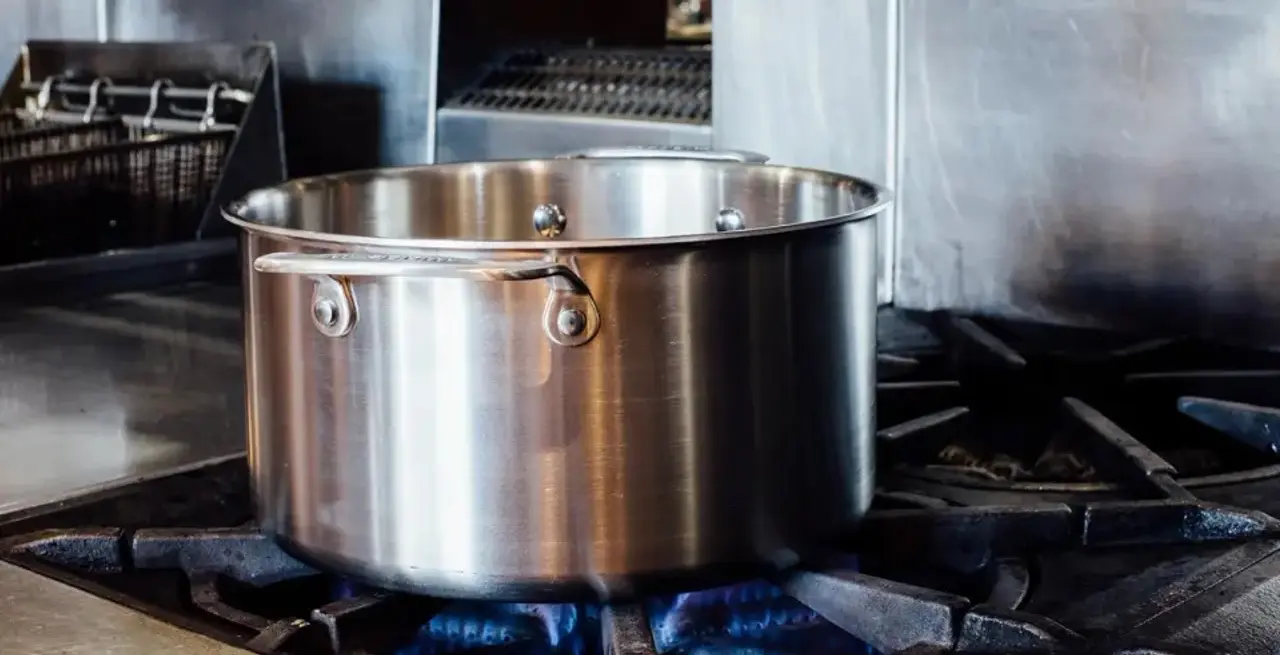A Stock Pot is one of the most essential pieces of cookware to have in your kitchen. And while it may not get used every day, it is critical to have one that performs well all the time. Stock Pots come in various sizes, but their shape is unmistakable: a circular pot with two helper handles, one on each side. The smallest size you usually find for a Stock Pot is around 6 quarts, and the largest size can be anywhere up to 120 quarts, although you would only find that large of a size in restaurants. Whether you’re making soup, chili, stock, boiling pasta, or preparing a seafood boil, it is crucial to have a Stock Pot that can retain its heat, heat evenly, and develop perfectly cooked food.
The Ideal Stock Pot Construction
When it comes to cookware, you want pots and pans that can heat evenly, respond to changes in heat, and feature a consistent construction throughout the entire pan. One of the best construction for pots and pans is 5-ply stainless clad.
5-ply stainless clad cookware features five different layers of metal. The outer two are most commonly stainless steel, which allows for safe cooking and induction cooktop capabilities. The inner three are aluminum and alloys, which are perfect for heat conductivity and allowing this piece of induction compatible cookware to get hot.
How Can I Use a Stock Pot?
A Stock Pot is perfect for large volume cooking. If you ever need to boil anything or make a large batch of soup, bone broth, or chili, then a large Stock Pot is your best friend. Its volume and consistent 5-ply construction throughout the walls allow your ingredients to cook evenly and consistently, making it a great pot for soups.
What Is the Difference Between a Stock Pot and a Dutch Oven?
The difference between a Stock Pot vs. a Dutch Oven is that a Dutch Oven has curved sides, while a Stock Pot has straight sides. Stock Pots are also larger than most Dutch Ovens. This means that it may be difficult to fit your Stock Pot in your oven, whereas a Dutch Oven can transition from stovetop to oven with ease. The curved sides and heavier bottom of a Dutch Oven also allow for easy reducing of liquids and stirring.
What Can I Use Instead of a Stock Pot?
A Stock Pot is definitely one of the most essential pots and pans to have. There isn’t much that can replace a Stock Pot because of its ability to hold volume. The only substitutions for a Stock Pot would be a Saucepan, Saute Pan, Slow Cooker, Pressure Cooker, Dutch Oven, or Saucier, but again you'd need to use less liquid in these.
Another thing to consider when choosing what pot to use is how much food you’ll be cooking. For example, you can definitely make risotto in a Stock Pot, but we would only recommend doing that if you're cooking six servings because of the large size of a Stock Pit. If you’re only serving risotto for two people, then a Stock Pot would not be the right choice, and we'd recommend cooking it in a Saucier.
The Bottom Line
When it comes to what type of pot to use, choose a Stock Pot for your largest kitchen tasks. It can hold the most liquid and ingredients, and performs exceptionally well for what it needs to do. When looking for what Stock Pot is best, choose one with a 5-ply stainless clad construction throughout the entire pot and start with one that is at least 8 quarts. This will allow you to make anything from stocks to chili to seafood boils and plenty more.






























